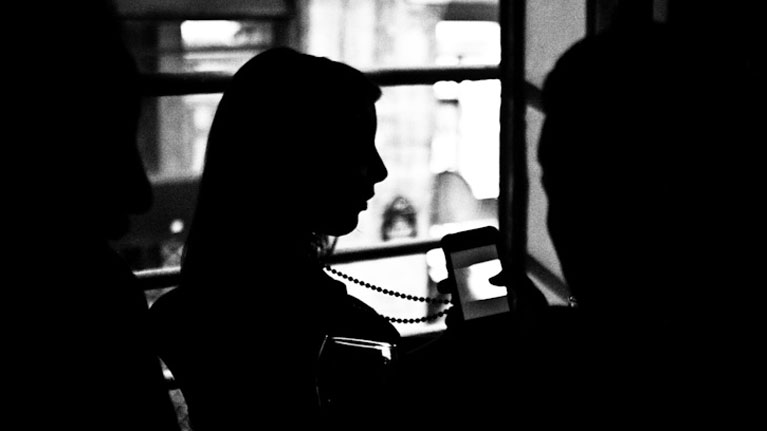Data Analysis Human Toll of Jail Women in Jail March 22, 2022
March is Women’s History Month, and the picture for women in America’s jails remains troubling. Focusing on women in jails is an important part of the work of the Safety and Justice Challenge as it seeks to reduce jail populations across the country. Here are just a few examples of the challenges women face in jail.
We Lock Up More Women Than Any Other Country
Only 4% of the world’s female population lives in the U.S., but the U.S. accounts for 30% of the world’s incarcerated women. Such an alarming disparity should prompt us to consider how our policies and practices are contributing to it. Nearly half of the 231,000 women and girls locked up in the U.S. each day are in local jails. Compared to other countries, the U.S. locks women up at the highest rate on the planet.
Racial Disparities
White women are incarcerated at a rate of 108 people per 100,000, less than half the incarceration rate of Black women. Native women are incarcerated at a rate of 349 people per 100,000. Black women are incarcerated at a rate of 285 people per 100,000.
Unsupportive Environments for Pregnant Women
58,000 pregnant women go to jail annually. But recently published findings from the groundbreaking Pregnancy in Prison Statistics (PIPS) Project and other datasets shed light on a common but rarely discussed experience: being pregnant, postpartum or giving birth while incarcerated. In total, 22 state prison systems, all federal prisons, 6 jails, and 3 youth confinement systems participated in the PIPS Project, a systematic study of pregnancy and its outcomes among incarcerated women. The project shows that being pregnant in jail or prison, or youth confinement, is characterized by a lack of supportive policies and practices. For example, only one-third of prisons and jails had any policy about breastfeeding and lactation. Even where policies supporting lactation did exist, relatively few women were breastfeeding or pumping.
Absence of Reproductive Choice
Two articles recently published in medical journals analyzed incarcerated people’s access to abortion and to permanent and reversible contraception. The studies reveal that abortion and contraception access varies greatly between states — and that abortion access for incarcerated people is related to broader state policies. Even in states that officially allow abortion, many people may be effectively blocked from obtaining the care they need, thanks to insurmountable barriers like self-payment requirements and physical distance from abortion caregivers. The studies make clear that people behind bars often have very few, if any, choices and autonomy when it comes to their reproductive health and decisions.
Rise in Jail Deaths Troubling as Jail Populations Become More Rural and Female
New data show record high deaths of people locked up in jail, as jail populations have shifted toward smaller, rural jails and growing numbers of women. A lack of accountability and acknowledgement of women’s unique disadvantages all but ensures more deaths to come. Women’s jail populations and rural jails are growing together. Between 2004 and 2014, the number of women in jail increased 43 percent in rural counties, while declining 6 percent in urban counties. For decades, jails in non-urban jurisdictions have quietly proliferated, fueled by increases in pretrial detention. Additionally, researchers have found that women entering rural jails are significantly more likely to have co-occurring serious mental illness and substance use disorder, despite being severely under-identified by their jails as having such needs.
Prisons and Jails Separate Millions of Mothers from Their Children
2 million women are jailed in the U.S. each year, and 80% are mothers. Every Mother’s Day, nearly 150,000 incarcerated mothers will spend the day apart from their children. Most of these women are incarcerated for non-violent offenses. Most are also the primary caretakers of their children, meaning that punishing them with incarceration tears their children away from a vital source of support. Women incarcerated in the U.S. are disproportionately in jails rather than prisons. Having to leave their children in someone else’s care, these women will be impacted by the brutal side effects of going to jail: Aggravation of mental health problems, a greater risk of suicide, and a much higher likelihood of ending up homeless or deprived of essential financial benefits. Most women who are incarcerated would be better served though alternatives in their communities.
Drug Law Enforcement Appears to Have Driven Women’s Incarceration
After skyrocketing for decades, overall incarceration rates have finally been on a slow decline since 2008. But a closer look at the data reveals a major exception: women. From 2009 to 2018, the number of women in city and county jails increased by 23% — a rise that effectively cancelled out more than 40% of the simultaneous 7.5% decrease in the men’s jail population. Meanwhile, reductions in state and federal prison populations have mostly affected men. Over the past 35 years, total arrests have risen 25% for women, while decreasing 33% for men. The increase among women is largely driven by drugs: During that period, drug related arrests increased nearly 216% for women, compared to 48% for men. Knowing that drug arrests are on the rise, we looked to see if addiction is increasing among women, particularly opioid abuse. We found that although women and men are equally likely to develop a substance use disorder, 57% of those misusing opioids are women. The health toll is enormous: Women entered emergency rooms due to painkiller misuse an average of once every three minutes in 2010. Women’s rising opioid use is also reflected in an almost 600% increase in opioid overdose deaths from 1999 to 2016, compared to a 312% increase for men over the same time frame.
Challenges on Release
1.9 million women are released from prisons and jails every year. Formerly incarcerated women (especially women of color) have higher rates of unemployment and homelessness; and are less likely to have a high school education, compared to formerly incarcerated men.
More on Women in Jail
As strategic allies of the Safety and Justice Challenge, I encourage readers to check out the Prison Policy Initiative’s Women and Gender page, for more of our original research and visualizations, and our research library for work done by other organizations looking at the incarceration of women.

